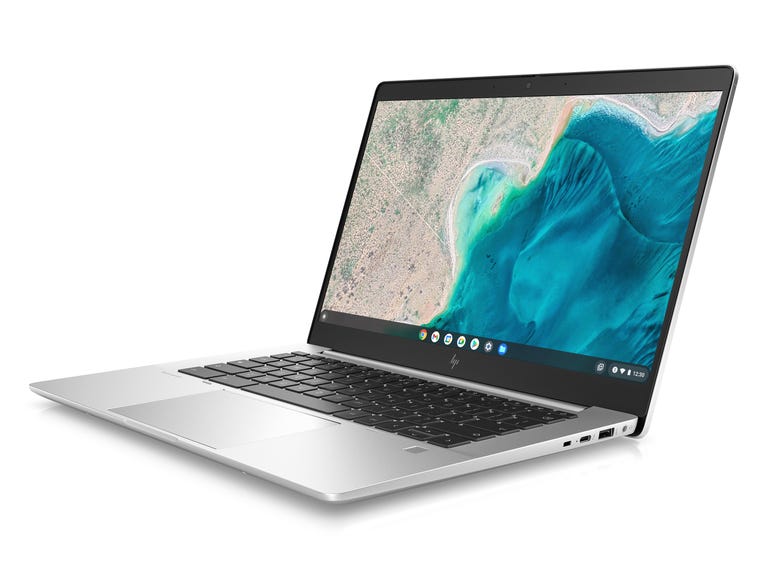Best 8K TV 2022: Future-proof your home theater
With 4K TVs having been on the market and going mainstream for the better part of a decade, brands like LG, Sony, Samsung, and even TCL have started to release 8K TVs in order to take the next step in home entertainment. An 8K TV gives you four times the resolution of a 4K model and 16 times that of a 1080p HD TV, ensuring that you’ll get truly stunning details, contrast, and colors to enhance and future-proof your home theater. Since native 8K content isn’t available for streaming or broadcast yet, and probably won’t be for the next few years, you’ll still be able to get a lot of value out of your new TV with upscaling capabilities to make everything from the hottest Marvel blockbusters to old Hollywood classics look amazing. And if you’re a console gamer who has managed to buy an Xbox Series X or PlayStation 5, both Microsoft and Sony have stated that their consoles will be able to support native 8K gaming in the future; so if you’re willing to dig deep to get the TV of your dreams, an 8K TV is a great way to ensure that your gaming space will be able to keep up with whatever current and future console generations have in store. To help you find the best fit for your budget, space, and entertainment needs, I’ve gathered five of the best 8K TVs available to buy right now. I’ve broken down their features so you can find a TV that’s almost tailor-made for you.
Also: Best TV 2022: Budget-friendly to big-screen opulence
Samsung QN900B
Best overall
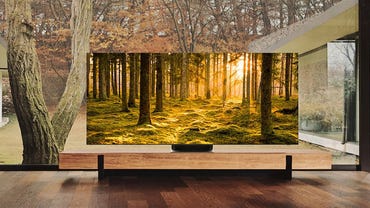
Screen size: 65, 75, and 85-inches | HDR: Quantum HDR 64X | Refresh rate: 120Hz | Panel type: Neo QLED | Audio: Dolby Atmos
The QN900B was our pick for best 8K TV from Samsung as well as our best splurge pick if you’re in the market for a 75-inch TV. Here, it snags the very top spot as the best of the best when it comes to 8K televisions. It’s built with Samsung’s Neo QLED panel and AI-assisted processor which uses 20 neural networks to identify movies and shows scene-by-scene and provide the very best native and upscaled 8K resolution. The screen itself features a bezel-free design so you get a true edge-to-edge picture, an anti-glare coating for better visibility in bright rooms, and is capable of producing up to 100 percent of the DCI-P3 color range for incredibly lifelike images. And if at any point you think your QN900B is losing its touch, you can download the companion app and get professional-quality calibration in under 15 minutes.
The speakers not only work with Samsung’s object tracking sound pro technology, but also Dolby Atmos for room-filling, virtual surround sound that follows the on-screen action for a more immersive experience. The dedicated game mode supports AMD FreeSync Premium Pro VRR technology for smoother playback as well as refresh rates up to 144Hz to prevent screen tearing and stuttering. The QN900B 8K television is also capable of two-way video calls with the Google Duo app; simply connect a compatible webcam and download the app to attend virtual meetings and video calls for work or stay in touch with friends and family from the comfort of your couch.
Pros:
- Excellent sound quality
- Two-way video calls
- 144Hz max refresh rate
Cons:
- No Dolby Vision support
- Expensive
- No 55-inch option
Sony Bravia XR Z9J
Best sound
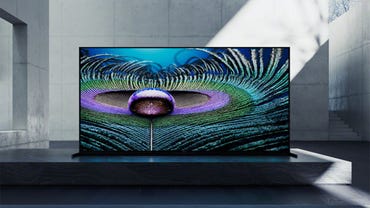
Screen size: 75 or 85-inches | HDR: Dolby Vision, HDR10 | Refresh rate: 120Hz | Panel type: LED | Audio: Dolby Atmos, DTS Digital Surround
If audio quality is your top priority when shopping for an 8K TV, look no further than the Sony Z9J. This model uses Sony’s Acoustic multi-audio technology, which places specially designed tweeters and subwoofers, along with regular speakers, around the edge of the television. This not only creates near-perfect audio and video synching, it also allows the sound to follow the on-screen action for a more immersive experience. And with support for both Dolby Atmos and DTS Digital Surround, you’ll get room-filling, virtual surround sound without the need to set up extra soundbars or speakers. The Z9J supports both AirPlay2 and Chromecast, so you can share music (as well as videos and photos) right from your iOS and Android mobile devices for more ways to entertain family and friends. And with the voice-enabled remote, you can use Hey Google, Alexa, or even Siri for hands-free controls.
Pros:
- Screen mirroring
- Object tracking sound
- Dolby Vision and Dolby Atmos support
Cons:
- Alexa requires smart speaker to use with TV
- Expensive
LG NanoCell 99 Series
Most affordable
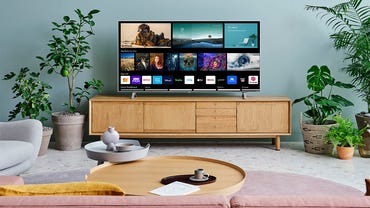
Screen size: 65-inches | HDR: Dolby Vision, HDR10 | Refresh rate: 120Hz | Panel type: LED | Audio: Dolby Atmos
Since 8K TVs are still fairly new technology, they tend to be on the high end of expensive. But the 65-inch LG NanoCell 99 Series has established itself as the most affordable on the market, retailing comfortably under $2,000. It’s built with a 4th generation a9 processor that’s enabled with AI-assisted sound and picture processing. This means that the TV automatically analyzes music, movies, and shows to adjust picture and audio settings for the best, most immersive experience possible. The integrated speakers work with Dolby Atmos for virtual, 3D surround sound while the screen itself has support for Dolby Vision for enhanced color, contrast, and detailing. There is a dedicated game mode which automatically lowers input lag and improves response times for smoother gameplay and faster reactions to inputs, while AirPlay 2 support lets you share media from your iOS mobile devices. The voice-enabled remote works with both Hey Google and Alexa for hands-free controls, and the suite of preloaded apps includes Netflix, Prime Video, and Hulu so you can get started streaming your favorite shows and movies right out of the box.
Pros:
- Under $2,000
- Dolby Vision and Dolby Atmos support
- AI-assisted sound and image processing
Cons:
- No VRR support
- No Apple Homekit support
TCL 6-Series 8K
Best for gaming
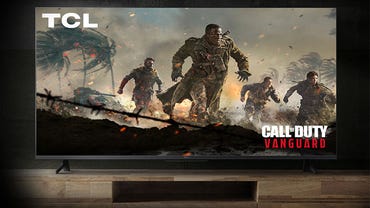
Screen size: 65-inches | HDR: Dolby Vision | Refresh rate: 120Hz | Panel type: QLED | Audio: THX (game mode only)
If you’re a gamer looking to stay ready for what this and future console generations will have to offer, the TCL 6-Series 8K TV is an almost perfect way to future-proof your gaming space. The 65-inch screen works with Dolby Vision for enhanced colors and contrast, while the VRR support and native 120Hz refresh rate ensures smoother gameplay. The TV even has a THX-certified gaming mode for clean, room-filling audio so you can hear opponent footsteps, fire, and other audio cues without a headset or extra home audio equipment. The game mode also automatically lowers input lag and response times for faster reactions and to reduce screen tearing and stuttering that can ruin your play session. The 6-Series has 4 HDMI inputs so you can connect multiple consoles, and the back of the TV has integrated cable management channels to help keep your gaming space looking neat and organized. And with the voice-enabled remote, you can use Siri, Alexa, or Hey Google for hands-free controls over both your TV and connected consoles so you can turn on your Xbox Series X or PlayStation 5 with just a word.
Pros:
- THX certified game mode
- VRR support
- Dolby Vision
Cons:
- Voice controls require extra apps/speakers
- No Dolby Atmos support
Hisesnse 75U800GR
Best big screen
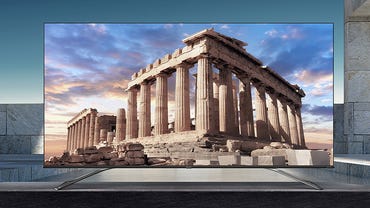
Screen size: 75-inch | HDR: Dolby Vision, HDR10 | Refresh rate: 120Hz | Panel type: ULED | Audio: Dolby Atmos
If you’re in the market for a bigger screen, the 75-inch Hisense 8K TV is a great option. It has plenty of screen real estate for you to appreciate the ultra-detailed images that 8K resolution can create; and with support for both Dolby Vision and HDR10, you’ll get enhanced color and contrast as well. This TV is capable of producing up to 1,000 nits of brightness, meaning you’ll be able to enjoy your favorite shows and movies in almost any lighting environment. And with 180 local dimming zones, you’ll get near-perfect blacks that rival what you’d find in OLED models from LG, Sony, and Samsung. The TV runs on the Roku platform, giving you access to thousands of streaming apps right out of the box. And since Roku keeps your most-used apps and connected devices in a single, simplified home menu, you won’t have to worry about navigating confusing menus or memorizing HDMI input names in order to play video games, catch up on news and sports, or finally watch that movie everyone is talking about. The Roku remote is voice-enabled and works with both Alexa and Hey Google for hands-free controls, and it also has a “find my remote” feature that makes the remote play a noise so that you can quickly retrieve it from between the couch cushions or from under that mountain of laundry you need to fold and put away.
Pros:
- Dolby Vision and Dolby Atmos support
- Voice controls
- “Find my remote” feature
- Great screen brightness and picture quality
Cons:
- No AirPlay or Chromecast support
How did we choose these 8K TVs?
Aside from image resolution, I chose a variety of 8K TVs with different screen sizes, feature packages, and price points. Since 8K televisions are still quite expensive, I did my best to choose models that offered the best value for the money by providing features that you’ve come to expect for home entertainment: preloaded apps, voice controls, HDR support, and dedicated gaming modes.
Which 8K TV is right for you?
Once you’ve recovered from the sticker shock and settled on a budget, the most important factor to consider when shopping for a new 8K TV is what core features they offer in order to meet your entertainment needs. If you’re a console gamer, a dedicated gaming mode that supports variable refresh rates, automatically lowers input lag and response times, and allows you to monitor framerate on-the-fly is what you need the most. If you’ve cut the cord and moved exclusively to streaming your content, a preloaded suite of popular apps like Netflix, Disney+, and Hulu is almost required along with Wi-Fi or Ethernet connectivity in order to download others like Spotify and YouTube.
|
Product |
Price |
HDR |
Refresh rate |
|
Samsung QN900B |
$4,997.99 |
Quantum HDR 64X |
120Hz |
|
Sony Bravia XR Z9J |
$4,998 |
Dolby Vision, HDR10 |
120Hz |
|
LG NanoCell 99 Series |
$1,699.99 |
Dolby Vision, HDR10 |
120Hz |
|
TCL 6-Series 8K |
$1,799.99 |
Dolby Vision |
120Hz |
|
Hisense 75U800GR |
$1,700.00 |
Dolby Vision |
120Hz |
Is it worth buying an 8K TV right now?
This is a bit of a complicated question to answer. Since native 8K content isn’t available yet for streaming or broadcast (and probably won’t be for a few years yet), you won’t be able to get the most out of your new, very expensive TV just yet. However, if you’re a console gamer who has managed to get their hands on an Xbox Series X or PlayStation 5, both Microsoft and Sony have stated that their consoles are capable of supporting native and upscaled 8K graphics; though the feature isn’t “unlocked” at this time, it seems to be in the works for the near future. Televisions capable of native 8K resolution are still relatively new technology, and therefore still very expensive; often retailing well over $3,000 for a 65-inch screen. But if you want peace of mind that you won’t have to upgrade your TV for at least 7 to 10 years, it’s a worthy investment.
Why aren’t there OLED 8K TVs?
While I can’t speak to specifics, since I can’t know what engineers at LG, Sony, and Samsung are up to, I can take a few educated guesses. First off: developing an OLED panel that is capable of native and upscaled 8K resolution is going to take a lot of time and money. And since 8K TVs haven’t quite taken off yet with average shoppers, it probably isn’t an attractive investment of money, manpower, and resources just yet. Secondly: an OLED 8K TV would be astronomically expensive.
The average price for a 65-inch 4K OLED TV is about $2,165, while the average price of current LED 8K televisions is $3,083. And this is after several years of being on the market and giving shoppers time to get familiar with the technology. So if a 65-inch 8K OLED TV were to hit the market, it wouldn’t be unreasonable to expect to pay $10,000 or better to get your hands on one. And while there are certainly people out there with deep enough pockets, there wouldn’t be enough shoppers willing to pay that in order to offset production costs.
Can you tell the difference between 4K and 8K?
Yes and no. On the average 55 or 65 inch screen, you wouldn’t really be able to see any noticeable improvement in detailing, contrast or color. But with 85-inch and above, you’ll start to see the finer details, more vibrant colors, and enhanced contrast. This is because 8K has four times the pixels of 4K and 16 times that of 1080p, so the pixel density is greater in any given screen size. So 55 and 65-inch 8K models would run the risk of looking fuzzy and muddled by trying to cram tens of millions of pixels into a smaller space. The biggest noticeable difference between 4K and 8K televisions is their native refresh rates; 4K models tend to tap out at 120Hz while 8K TVs can push upwards of 144 or even 240Hz with specialized processing software.
Are there alternative 8K TVs worth considering?
Unfortunately, there aren’t very many 8K TVs on the market right now, but here are a few extras I thought were great choices:



